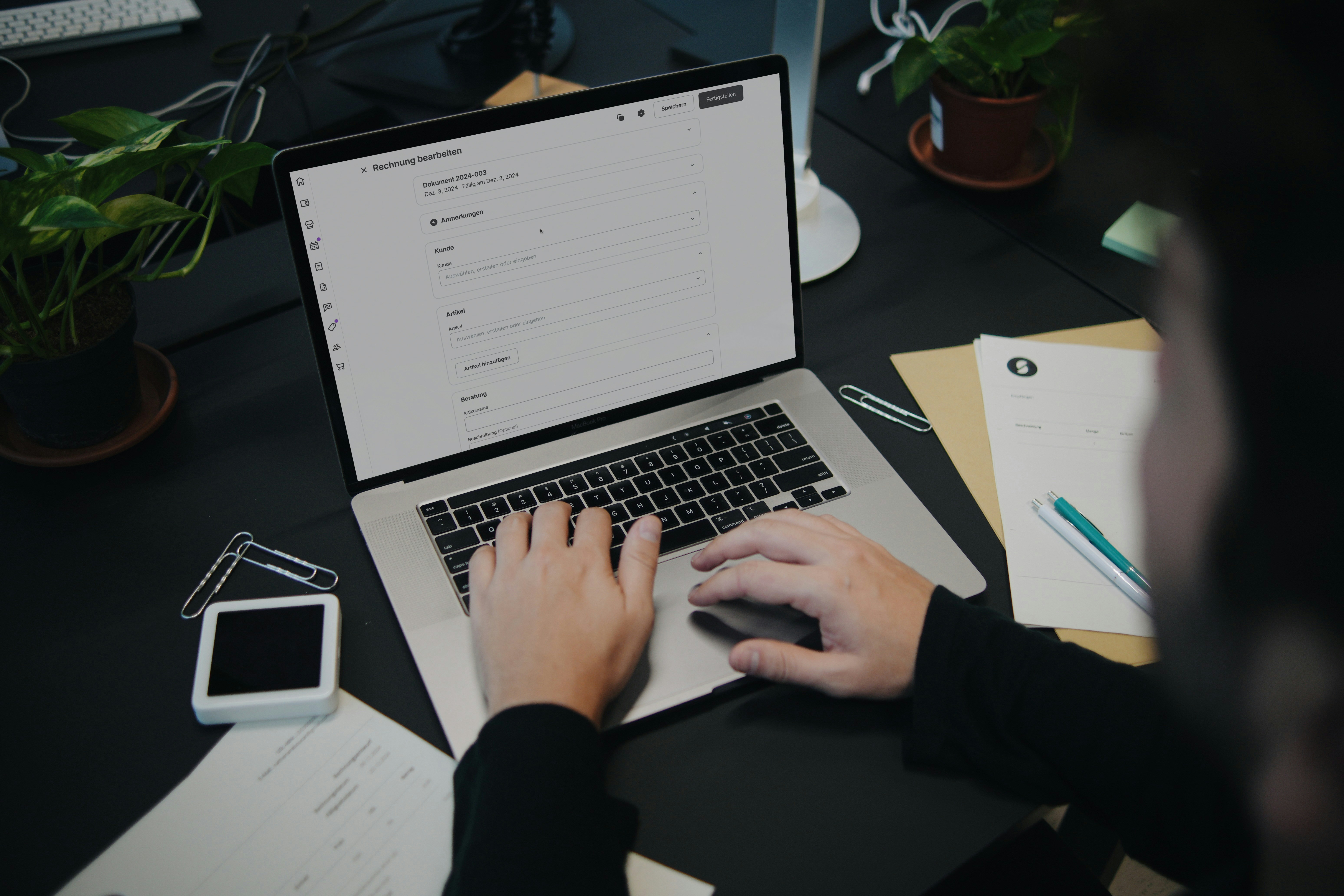
Spain will make e-invoicing mandatory for all B2B freelancers and companies between 2025 and 2026. If you're self-employed with less than €8 million in turnover, the switch starts for you in July 2025.
This guide breaks down the legal rules, format (Facturae), step-by-step setup, software options, grants available, and what fines to avoid.
Going digital now can save you €4.60–€8.60 per invoice, speed up payments by up to 16 days, and cut paper-related CO2 by more than 60 %.
Electronic invoice self-employed: what it is & why it matters
Digital invoices will be the new norm by law.
An electronic invoice is a digital bill that guarantees authenticity, integrity and legibility, based on Spain’s Royal Decree 1619/2012 and EU rules.
You might hear terms like:
- Facturae: the XML format Spain uses for e-invoices.
- Digital invoice self-employed: what freelancers must issue.
- E-invoice: same thing, often used in the EU.
Today, just 7 % of Spanish small businesses use them. That means freelancers who start now can save time and money ahead of the rush.
Learn more about e-invoicing in Spain.
Legal obligations & timeline (electronic invoicing for self-employed individuals)
Freelancers must follow Spain’s "Crea y Crece" Law.
The law aims to stop late payments. Deadlines depend on your turnover:
- If you made over €8 M in 2022: you must start using e-invoicing 12 months after the technical regulation was published - July 2024.
- If you made less than €8 M: you must comply by January 2026, which is 24 months after publication.
The law also connects with:
- Royal Decree 1007/2023 (Verifactu): bans double-use software and requires every invoice to include a QR code and report to AEAT.
- Draft RD 253/2025: future link to your bank data and real-time VAT (SII).

Technical requirements & format (digital invoicing self-employed)
You must use Facturae format with security features.
- Format: Facturae 3.x (XML) with specific fields.
- Signature: XAdES (advanced XML signature) using SHA-256 hashing.
- Certificate: must come from FNMT, ACCV, or a qualified cloud e-seal.
Approved billing tools must:
- Prevent edits (immutability logs).
- Let you export your data (JSON) for AEAT.
- Be certified by Hacienda (SIF-ready).
If you use VAT real-time reporting (SII), the tool should also sync automatically.
Step-by-step: how to issue your digital invoice self-employed
Follow this simple workflow:
- Gather data: your tax info, client's tax info, VAT rates.
- Pick software:
- renn (free)
- Xolo, Cuéntica, Holded, Quipu, Declarando, Quaderno (paid)
- Let the software do the rest: Most tools generate the XML, add the QR, and handle validation and syncing. Some do it more smoothly than others - so better software means less hassle.
Benefits: why go digital before the deadline
There are real savings in money, time and stress.
- Faster: EU data shows payments arrive 16 days sooner.
- Cleaner: CO2 from paper invoices drops by over 60 %.
- More credible: large clients and public bodies already demand e-invoices.
Penalties & common mistakes (electronic invoice for self-employed)
Non-compliance gets expensive fast.
- Double-use software: This refers to software that can create two versions of your accounts - one real, one hidden. It's used for tax evasion and is banned under Verifactu. Certified software must block this completely. If you use or even keep such software, you could be fined:
- €50,000 per year.
- €1,000 per device it's installed on.
- No e-invoice when required: €150–€10 000 fine per invoice.
- No backups: minor offence, up to €2,000.
Avoid these mistakes:
- Forgetting to renew digital certificate.
- Not storing invoices in AEAT-compliant format.
- Skipping daily sync to Hacienda.
- QR codes not readable.
Bottom line
Pick compliant software. Add your digital certificate. Hit the July 2025 deadline.
Start using electronic invoices now to stay ahead, cut admin, get paid faster and avoid fines.





